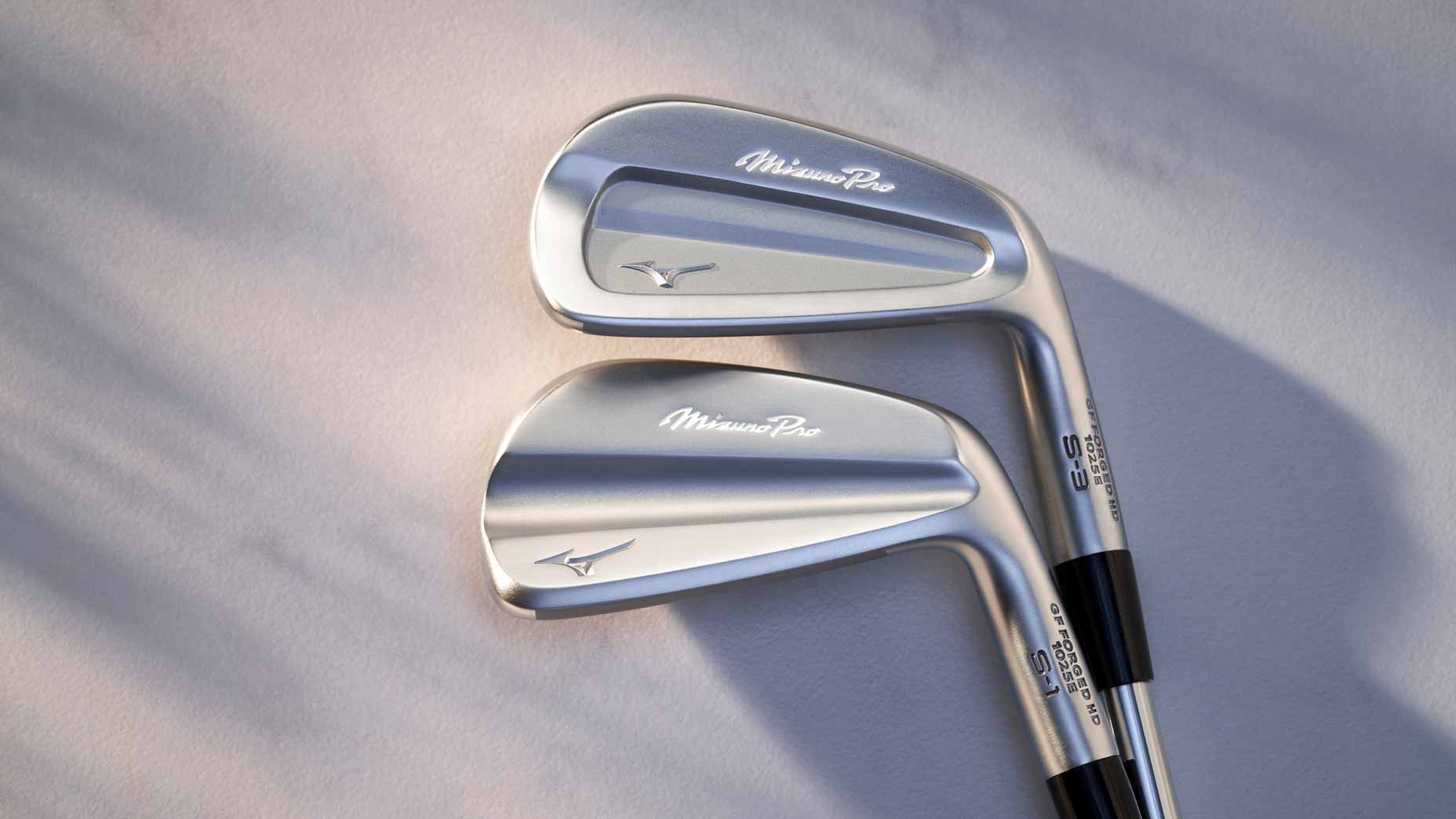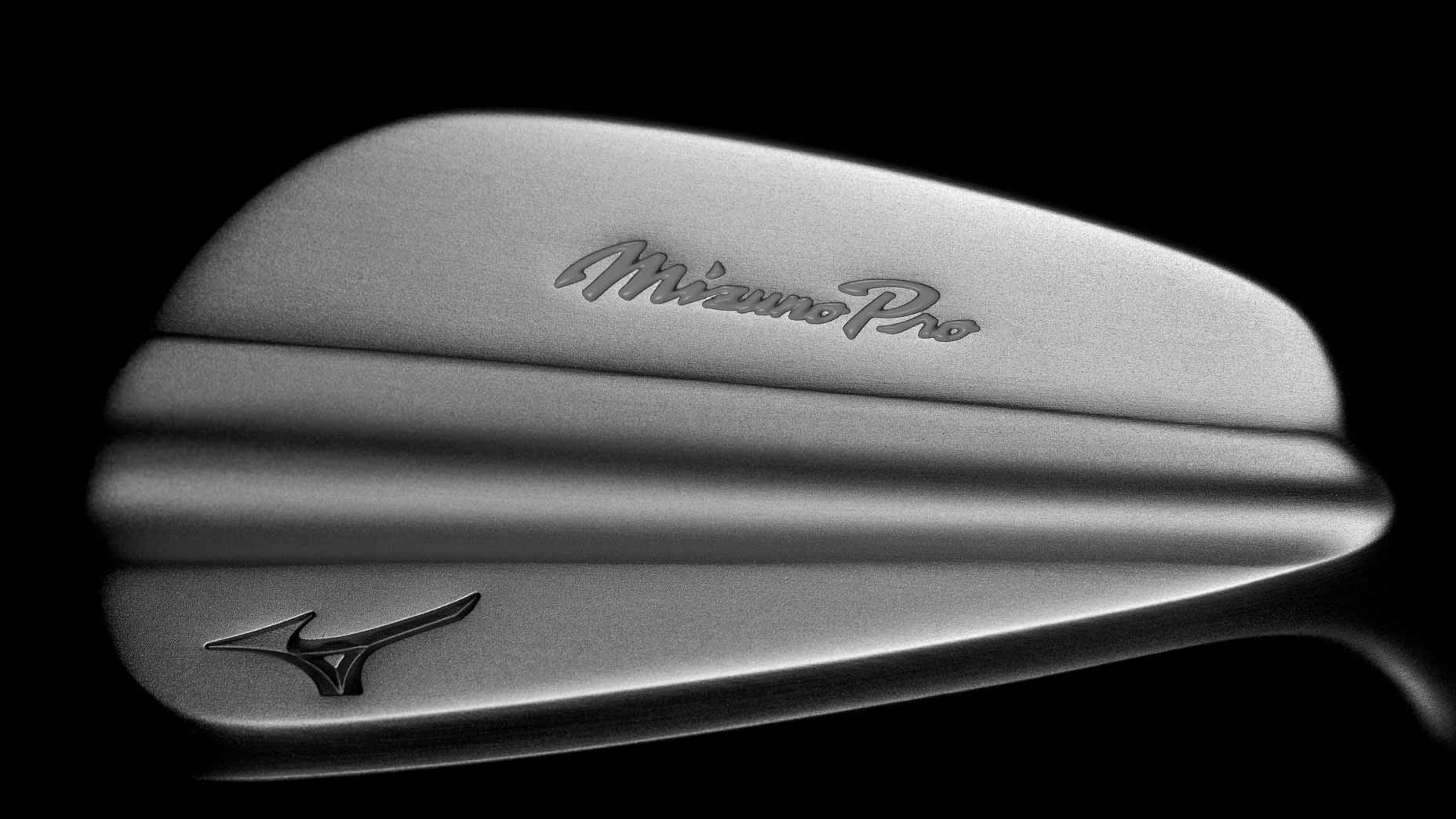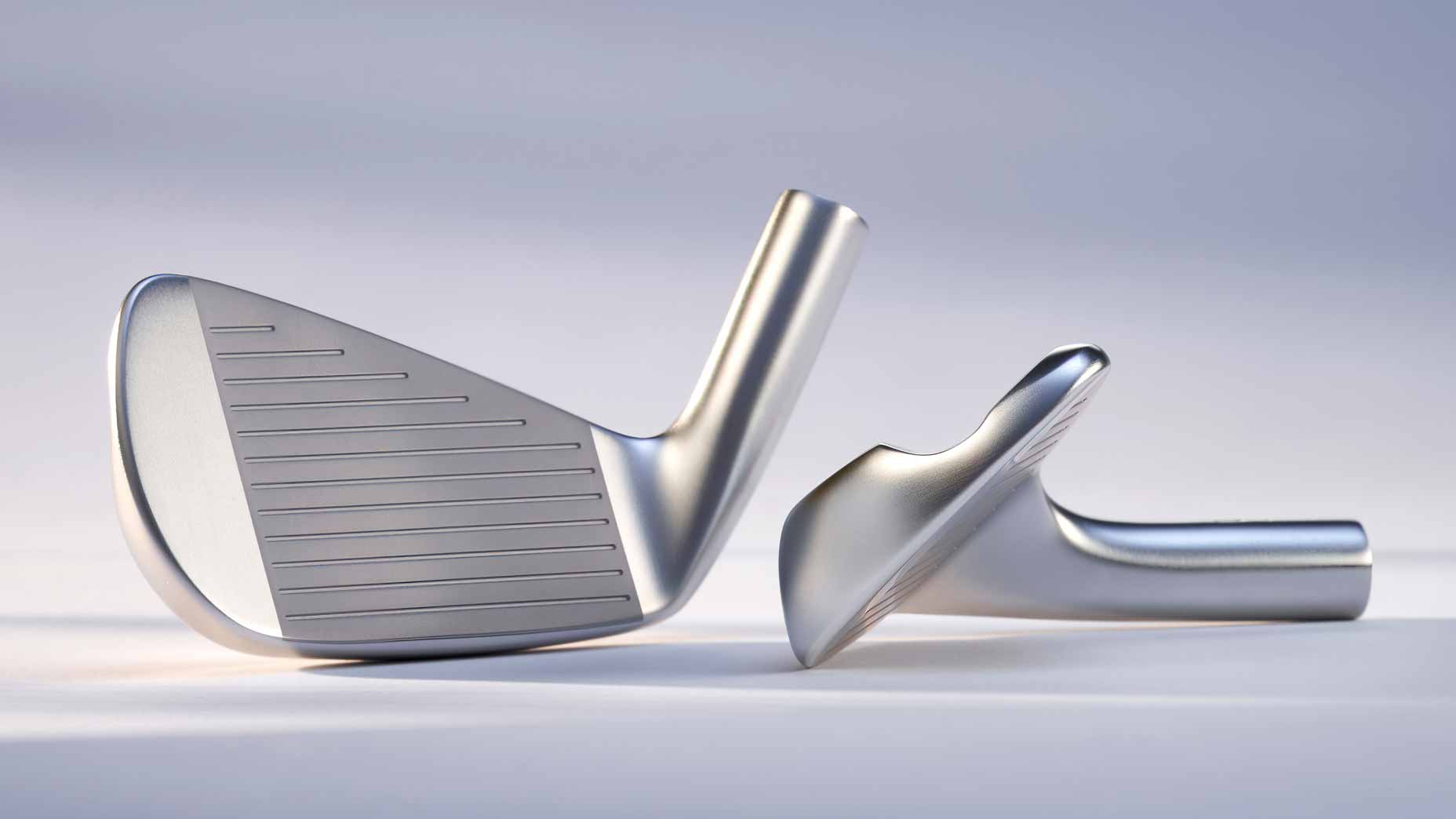

Mizuno‘s new Mizuno Pro Signature line is growing, and it’s sure to be a release gearheads will clamor for.
The company is announcing the Mizuno Pro S-1, a new single-piece forged compact muscle back iron to join the Mizuno Pro S-3 shallow-cavity back iron released earlier this year.
“The whole concept behind it is basically to add another weapon to our signature series family,” said Chris Voshall, Mizuno’s head of product. “Incremental improvement, just based off a lot of tour testing. This has been a tour-driven model.”
The S-3 was the first iron in Mizuno’s new Signature line, which will be strictly one-piece forged irons in varying shapes. The S-1 is the first muscle back to be added to the family.
Keep reading below for four things to know about the new Mizuno Pro S-1, as well as my thoughts on the new blade.
When the S-3 was launched earlier this year, it basically occupied the spot that was previously slated for the JPX Tour and could have been the JPX 925 Tour. But with the rebrand to the Mizuno Pro Signature family, sales for the model are up 86.3 percent compared to the JPX 923 Tour, Voshall said.
The JPX Tour brand was created to help elevate the JPX family out of the Mizuno Pro line’s shadow. With Mizuno JPX now one of the top-selling families of irons in golf, Mizuno is allowing the Signature line to be strictly for Tour feedback, and eventually there will be four different shapes, two muscle backs and two cavity backs, that live for four-year life cycles.

With the S-1, Mizuno took direct feedback from staffers Keith Mitchell and Ben Griffin to develop a muscle back shape that features straighter and more angular shaping than the Mizuno Pro 241.
Just like the S-3, the S-1s are forged from a single piece of 1025E Pure Select Mild Carbon Steel using Mizuno’s patented Grain Flow Forged HD process and feature a soft copper underlay for feel.
The most defining feature of the S-1 is the new channel back design that Voshall says helped designers optimize the iron’s CG placement throughout the set.
“The channel allows us to control those mass properties a little bit better to get a more consistent CG location where the CG doesn’t drop as much throughout the set,” he said. “And when it doesn’t drop as much through the set, that helps you flight the set a little bit better, being your scoring irons can get a little bit more penetrating than if the CG begins to drop. It also increases the vertical moment of inertia, so you get more stable launch conditions as well.”

While the S-1 and S-3 share the same forging process and striking satin finish, one thing the two irons won’t share is the sole design. S-3 features a new Triple Cut Sole, which adds bounce on the leading edge and gives extra relief on the trailing edge to help the iron get in and out of the ground quickly.
With the S-1, Mizuno went with a flatter sole with a sharper leading edge, but with one degree more measured bounce than the Pro 241.
It turns out that the flatter and sharper sole is the grind Mizuno used for Mitchell’s Pro 221 blades, and his input helped create the sole for the S-1.
“A part of the S family idea is that like not one sole is for everybody,” Voshall said. “One of the things we tested was the Triple Cut on that muscle back, and the majority of our blade players actually did not prefer it. They preferred the more bounce with the flatter soul.
“You’ll see different souls throughout the S family as it progresses as well.”

One neat thing that Voshall pointed out about the production of the S-1 is that Mizuno is using a smaller billet to forge most of the heads. Typically, they’ve always used a 27 mm billet, but the billets for the S-1 (except for the pitching wedge) are only 25 mm.
While 2 mm might sound like much, Voshall said estimates are that the reduction in billet size will save about 50 tons of scrap metal per year.
“You’re not going to see us talk about this much, just because the benefit there isn’t to the golfer,” Voshall said. “To me, the benefit of this is to the world.”
If you’ve followed me already, you already know that I’ve been a lifelong Mizuno irons player, having started over 12 years ago when my dad first cut down a set of MP-52s for me.
Since then, I’ve gone through several sets, and they seem to get better and better, and they’ve also been shedding their stigma as a brand just for elite players.
The S-1 won’t help them continue to prove that they’re for every player (not that they still need to), but I really like what they are doing with their new Signature line.
Both the S-1 and S-3 are on the more compact side of single-piece forged irons, so I’ll continue to wait for the next two shapes in the Signature line, which could potentially be larger and maybe a touch more forgiving.
But these will be a fantastic option for those who like that more compact look. While there isn’t much tech you can put into a muscle back, seeing them go for some weighting advancements with the channel back is going to be very helpful.
In addition, I love that there are different options for the sole because not everyone will love the triple-cut sole.
Once the Signature line is complete, I expect players who want that classic Mizuno feel in a simple single-piece forging will have so many options to pick from to find their perfect iron.
Mizuno’s new Pro S-1 irons will be available for pre-order starting Thursday, August 28, and arrive at retail two weeks later on Thursday, September 11th.
The irons will cost $215 per club and come stock with KBS Tour shafts and Golf Pride Tour Velvet grips. The 7-iron specs are 34˚ loft, 62˚ lie and 37.25″ length
Want to find the best irons for your bag in 2025? Find a club-fitting location near you at True Spec Golf.
The post Mizuno Pro S-1 irons | 4 things to know appeared first on Golf.